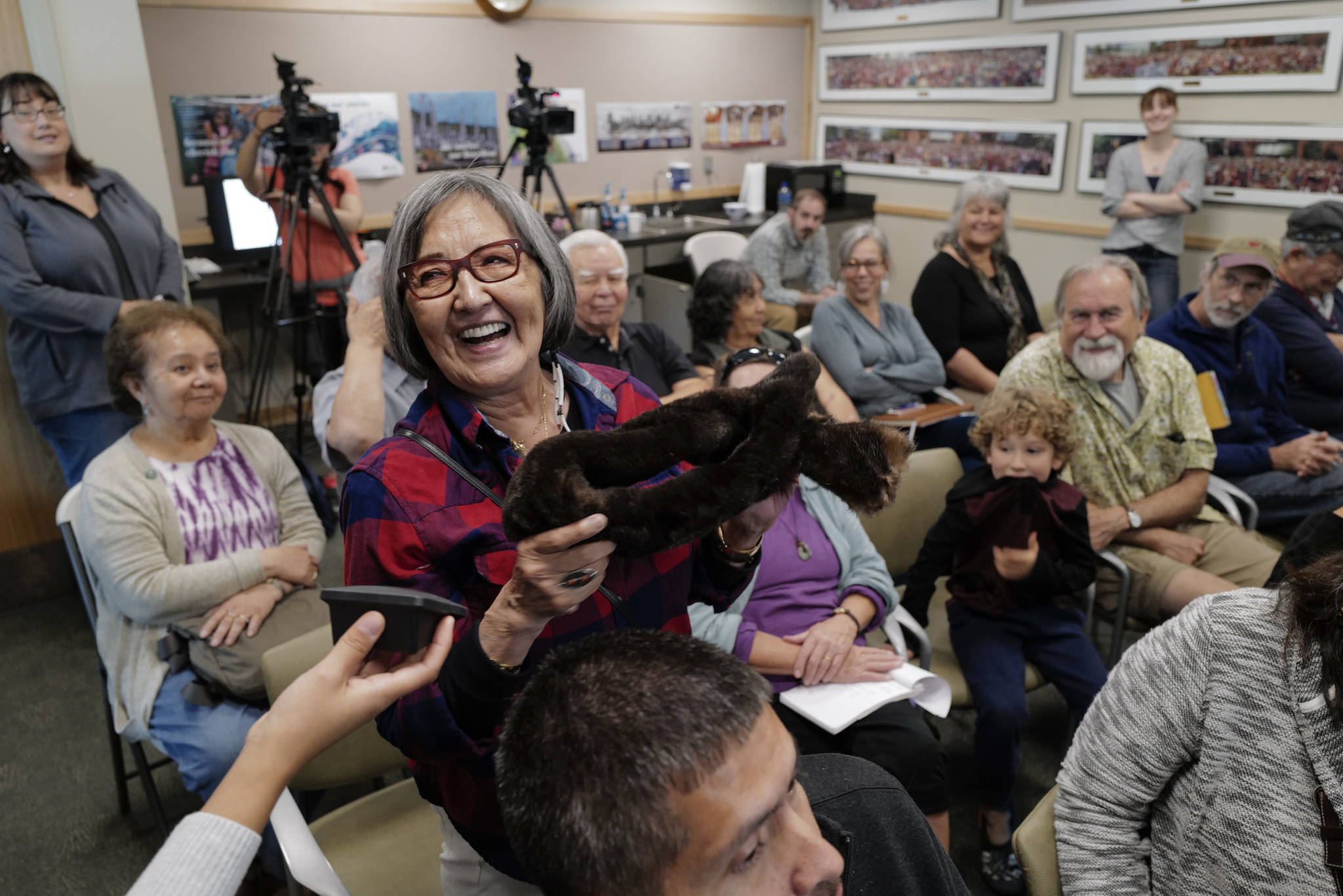cMadonna Moss set out to answer a simple question, and through in-depth research she came up with a complex answer.
The University of Oregon anthropology professor and curator of zooarchaeology for the Museum of Natural and Cultural History was asked by Sealaska Heritage Institute to determine whether Tlingit people historically harvested sea otters for food.
“I think they hunted sea otters primarily for pelts,” Moss said near the end of a lecture Friday at SHI’s Walter Soboleff Building. “I do not think they were a dietary staple.”
However, she said it would be inaccurate to say sea otters were never a food source.
“I think people were occasionally — not always, not every sea otter — cutting out the back straps of sea otters and eating them,” Moss said.
One of the reasons SHI, a nonprofit that supports and promotes Alaska Native arts and culture, funded Moss’ project was to help determine how Native people had traditionally harvested sea otters, said Chuch Smythe, Director of history and culture for SHI.
[Otter hunting makes earrings for Aleut artist]
Alaska Natives are allowed to harvest sea otters, which would otherwise be federally protected by the Marine Mammal Protection Act, but Smythe said some feel the practice of harvesting otters for their fur — something that is done to provide materials for SHI skin sewing workshops — is wasteful.
The act specifically states marine mammals may be taken “for purposes of creating and selling authentic Native articles of handicraft and clothing.”
However, Smythe said he’s also heard some say otters should be eaten in order for the Marine Mammal Protection Act exception to continue. Sometimes, Smythe said that opinion comes paired with the assumption that Natives traditionally ate sea otters.
However, Moss’ research arrived at the conclusion that sea otters were primarily harvested for their fur, not their meat.
That conclusion came after a lot of research.
One of the reasons extensive research was required is the 19th century Russian occupation of Alaska. A desire for otter fur led to over-hunting, and Moss said by 1830 sea otters in Southeast Alaska were largely extinct, Moss said.
Sea otters were reintroduced in the 1960s, and Moss said the population has now rebounded to an estimated 30,000 otters.
While otters are common enough now that some Alaskans, including fishermen and state legislators consider them a nuisance, they had been essentially absent for more than a century. So for answers, Moss had to turn to the past.
Moss compared seal bones and sea otter bones initially excavated in the 1950s from a pair of pre-contact sites in Angoon. Since seal was definitely known to be a food source, if the ancient bones showed signs of similar wear, tear and cutting, it could be a sign that sea otter was also eaten.
“I saw some differences between how people were using sea otters and seals, but I wasn’t sure how to interpret it,” Moss said.
[Formline meets the red line at Douglas ice rink]
Some clarity was added when Moss was provided the carcass of a recently skinned sea otter.
Since Moss knew the animal was not dismembered and that it was used solely for its pelt, she was able to examine its bones for cut marks after the otter’s flesh was eaten by beetles.
She found cut marks where she did not expect to find them, which she inferred were caused by a need to create leverage to pry the sea otters’ pelt from its body.
Those cuts were comparable to what she saw on the ancient bones, but did not match up exactly, Moss said.
After speaking with Tlingit people about whether otter was known to be good eating, Moss came to the idea that the “back straps” of otters were likely easier to eat and tastier than other muscular and tough portions of the animal.
However, whether that meat was eaten by people because other food was less available or whether it was fed to dogs is less clear.
“That’s unknown,” Moss said.
• Contact reporter Ben Hohenstatt at (907)523-2243 or bhohenstatt@juneauempire.com. Follow him on Twitter at @BenHohenstatt.

